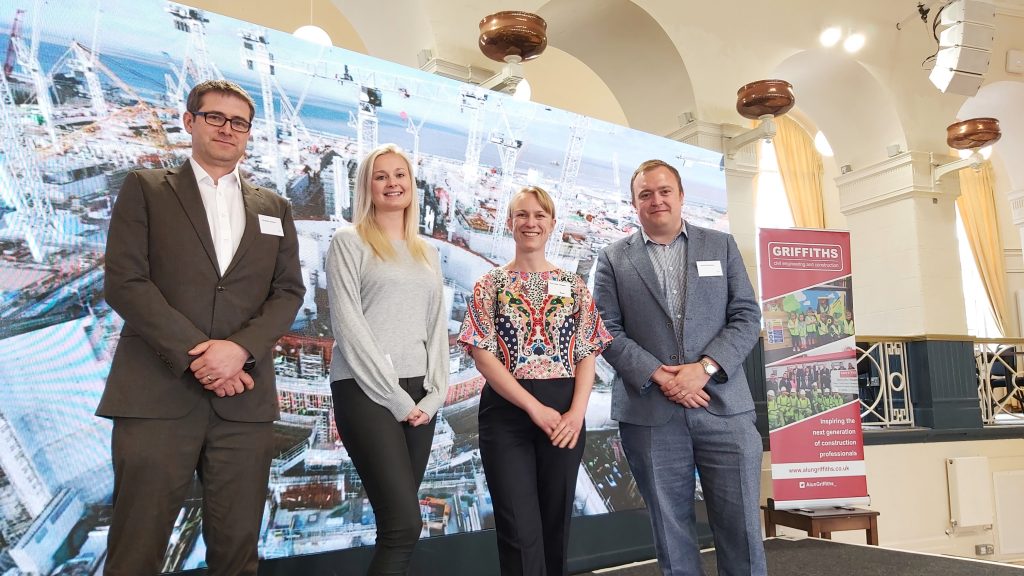Constructing Excellence South West’s Somerset Club gathered senior leaders from across the region to put Europe’s largest construction project under the spotlight
In 2016, Somerset became home to Hinkley Point C (HPC), the first in a new generation of nuclear power stations designed to support the UK’s ambition to reach net-zero by 2050. In addition to being one of Britain’s most powerful actions to fight climate change, it’s the biggest construction project in Europe.
Creating opportunities for up to 25,000 employees and training 1,000 apprentices, HPC is much more than just a large-scale programme. Since work began, it has brought together specialist knowledge, sector experience and has uncovered numerous key learnings which can help to drive real change in construction.
Spanning 430 acres in total, the project is undoubtedly like anything else being developed in the sector.
The Constructing Excellence Somerset Club facilitated a dedicated workshop which was hosted in Weston–super-Mare, sponsored by civil engineering company, Alun Griffiths (Contractors) Ltd and supported by BYLOR – the Laing O’Rourke and Bouygues TP joint venture, delivering the main civil works package at HPC.
The session provided an opportunity for industry professionals to closely explore innovation, success and the challenges such a construction project brings.
Liz Bennett, Chair of CE Somerset Club, kick-started the session: “This is one of the first learning and sharing events we’ve run in the South West for several years.
“As the industry starts to recover from lockdown it’s great to take advantage of opportunities like this where we can look to see how lessons can be learnt and then applied to smaller construction projects in the region.”

Sustainability matters
Following an overview of the project, its enormity and complexities, the discussions turned to sustainability.
As construction and the built environment are responsible for 40% of global carbon emissions, the sector has become incredibly focused on hitting the net-zero targets set out by the UK government. So, it was no surprise that participants were curious to see how Europe’s largest construction project is tackling this.
James Bromley, Commercial Director, and Andrew Jackson, Technical Director, from BYLOR explained some innovative solutions HPC is trialling. One example in particular focused on the production of concrete.
With over 1.4 million m3 cubic metres needed – that’s 500 Olympic swimming pools – the HPC team has a specialist concrete batching plant on site, with a jetty so that materials can be brought to site by ferry, taking trucks off local roads. This means all concrete needed is produced on site, ensuring a consistent quality product needed to build a nuclear power station is created. Additionally, the team can make exactly what they need and when, reducing the amount of unnecessary waste.
But that’s not all. Before the project started on site, the team carried out several years of thorough testing to create a high quality and specifically formulated mix of concrete which contains less carbon.
After hearing about this innovative approach, the group felt inspired by the out-of-the-box thinking but questioned whether the industry is really ready for this. Participants were in agreement, that outside of major projects like this, the market isn’t currently moving at the pace of change required. In fact, they believe, more needs to be done to educate and support these changes in order to find more innovative solutions to tackle the climate crisis.
On-site digital solutions
The conversation then steered to digital tools as Francesca Draper, Senior Engineer at BYLOR explained how digitisation is fully utilised at HPC from the design phase right through to post-construction.
“Digital engineering isn’t and shouldn’t be an afterthought in built-environment initiatives,” Francesca explains.
“At BYLOR, on the HPC Project it’s fundamental to how we work, with each digital component of our toolset evolving over time in response to specific needs. The integration of this toolkit now allows us to map out every phase of the plan and limit the chances of an error occurring on the job site.
“Our experience indicates that disrupting the status quo and looking to the digital landscape for solutions can provide significant benefits. The approach of identifying pain-points and looking for solutions through digitalisation tools could be applied across the industry to any project, regardless of size.”
Digital solutions can help to connect not only every phase of the programme but also its team members who will be able to clearly understand their responsibilities and tasks when on site.
The participants shared their thoughts on why more digital tools aren’t currently used within the sector. They argued that smaller projects may not want to digitalise their processes and, even if they did, the tools required could be too expensive.
But they believe if digital engineering is clearly communicated and taught, senior leaders and teams will see the positive impact and benefit that digital ways of working will have on their projects. As a result, they could be more widely adopted throughout the industry.
With HPC fully utilising digitisation across the programme, the club recommended adopting these techniques and approaches with a smaller scale project to illustrate this as a best practice example.
“Running a pilot could be a great way to help remove some of the existing barriers and obstacles that are currently preventing digital transformation across the sector,” explains Dan Macey, Chair of Constructing Excellence South West.
Future skills at Hinkley Point
The day of discussion concluded with a focus on the future skills of the industry and Yasmin Caddick, Senior Quantity Surveyor at BYLOR, showcased how Hinkley has recruited and attracted a whole host of talent into the sector.
With an aging workforce, a big priority for the sector is ensuring it can successfully encourage the younger generation to apply for a career within construction.
The group explored ways to retain and attract new talent into the industry, and discussed how collaborating and engaging with educators throughout the region is key.
A collaborative approach is best
Following a successful day of debate, Andrew Carpenter, CEO of Constructing Excellence South West, rounded off the event.
“The session was incredibly valuable and included lots of very engaging discussions. Although the sector faces a number of challenges, working more collaboratively to collectively tackle them will be beneficial for the region, and sector, as a whole.
“HPC is an outstanding project and CESW wants to thank the BYLOR team for agreeing to be put under the spotlight to showcase their work to this group of construction professionals.
“I’d also like to say a massive thank you to Alun Griffiths (Contractors) Ltd. for sponsoring this event because without their generosity it wouldn’t have been possible to host this specialist session.
“Following this best practice event, it’s time to take some of HPC’s approaches and practices to see how they can be disseminated more widely across the sector – no matter the project’s size.
“Adopting a more joined-up approach will be incredibly beneficial to the future of the industry and this is a great first step.”














